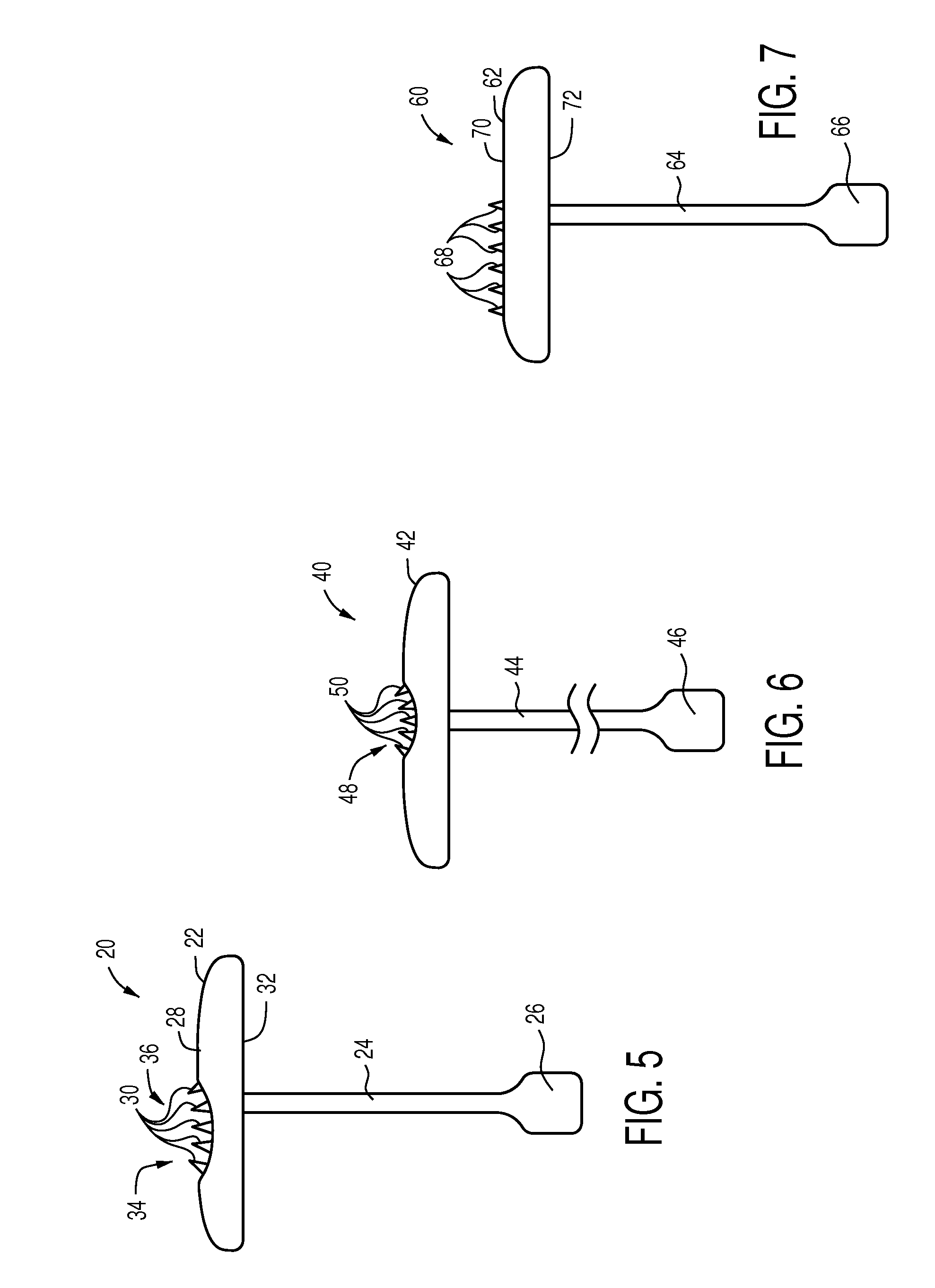Middle ear prosthesis having discrete projections for purposes of ossicular attachment
a technology of ossicular attachment and projection, which is applied in the field of middle ear prosthesis, can solve the problems of not effectively transmitting ossicular motion to the fluids of the inner ear, hearing loss, and often dysfunction, and achieves the effects of reducing the chance of necrosis, broad contact, and minimizing disturbance to the underlying mucosa and blood vessels
- Summary
- Abstract
- Description
- Claims
- Application Information
AI Technical Summary
Benefits of technology
Problems solved by technology
Method used
Image
Examples
Embodiment Construction
[0022]FIG. 1 shows a middle ear prosthesis such as a stapes prosthesis 5 comprising a loop 3 which is formed as a partial circle of at least one hundred eighty degrees, or as shown, three hundred to three hundred thirty degrees, for encircling an ossicle such as an incus 1 (seen in cross section in FIG. 1). It would of course be possible to arrange the loop 3 as a full circle, by adding an element which closes the gap which exists when the loop 3 forms a partial circle as depicted and a suitable fastener for retaining the added element to the loop 3 (this option is not shown). The loop 3 bears a linear array of projections or spikes 2, which may for example be arrayed as a row of spikes 2, which project inwardly from the inner surface 6 of the loop 3, and which make contact with the underlying incus 1. The terms projection and spike, both in the singular and in the plural, will be used interchangeably herein. Inwardly signifies towards the center of the circle which would exist if t...
PUM
| Property | Measurement | Unit |
|---|---|---|
| angle | aaaaa | aaaaa |
| length | aaaaa | aaaaa |
| surface area | aaaaa | aaaaa |
Abstract
Description
Claims
Application Information
 Login to view more
Login to view more - R&D Engineer
- R&D Manager
- IP Professional
- Industry Leading Data Capabilities
- Powerful AI technology
- Patent DNA Extraction
Browse by: Latest US Patents, China's latest patents, Technical Efficacy Thesaurus, Application Domain, Technology Topic.
© 2024 PatSnap. All rights reserved.Legal|Privacy policy|Modern Slavery Act Transparency Statement|Sitemap



